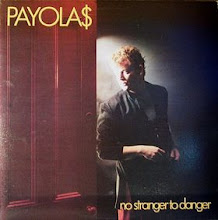
There is no way a film like Whoever Slew Auntie Roo? (Harrington 1971) could ever be made today. Dark, bizarre and filled to the brim with insane and morally questionable characters, Curtis Harrington’s 1971 film could only have been made by American International Pictures. The company, formed in 1956, specialized in lower budget genre films and famously released Roger Corman’s earliest and (arguably) best work. Despite the low budgets and commercial focus of the company, it often produced some surprisingly memorable films, and employed some highly recognizable talent in front of the camera and behind, such as Richard Matheson, Vincent Price and, in the case of this film, Shirley Winters.
Set after World War I, Whoever Slew Auntie Roo? stars Winters as Mrs. Forrest, an American woman living in England. Left wealthy by her deceased magician husband, Forrest is mentally unbalanced by the accidental death of her daughter. Forrest’s mental unbalance is made clear in the opening scene of the film, as the audience discovers Forrest singing to the skeletal corpse of her daughter, which she hides in her home. In this state of psychotic guilt and loneliness, Mrs. Forrest employs a medium named Mr. Benton (Ralph Richardson) to hold séances to speak to her daughter.
Each year at Christmas, Mrs. Forrest holds a party for ten orphans, and it is at this point we are introduced to siblings Christopher and Katy (Mark Lester and Chloe Franks). Abandoned and trusting only each other, the siblings promise only to lie to others, a promise which manages to get them into trouble and keeps them off the guest list to Mrs. Forrest’s party. Christopher and Katy instead manage to sneak to Mrs. Forrest’s house on their own, only to be discovered. Rather than being angry, Mrs. Forrest allows the children to stay. However, during another late night séance, Katy enters the room just as Mrs. Winter’s asks for the return of her daughter, crystallizing in her mind the similarities between her lost daughter and Katy. Meanwhile, the imaginative Christopher begins to notice some peculiar activities about the house, prompting his own suspicious of Mrs. Forrest.
Whoever Slew Auntie Roo? is a pitch black comedy with a strong dose of irony. Set after World War I, a war in which the world lost a supposed innocence as a result of the horrors witnessed, the film explores the ways in which individuals cope with loss through fantasy, and how such loss shapes their respective fantasy. Mrs. Forrest, with her husband and daughter dead, desires to preserve a state of childhood innocence and purity she assumes of children, beautifully illustrated in a speech she gives to the orphanage headmistress about why she makes her Christmas parties extravagant. Mrs. Forrest herself is the true innocent of the film, despite her extreme behaviour, desiring to love and be loved in return. The role is a meaty one for Shelly Winters, who manages to play the role at extreme levels without drifting into parody.
In direct opposition to Mrs. Forrest’s fantasy of childhood is Christopher. Hardened by the abandonment of himself and his sister, Christopher has developed a strong distrust of adults and combats them in any way he can, taking steps to ensure the future for him and his sister. In a particularly memorable scene, Christopher steals some of Mrs. Forrest’s diamonds by stuffing them into Katy’s bear, with the goal to sell them as adults should they never be adopted. This distrust of adults results in Christopher filtering everything through the fables he knows, particularly the story of “Hansel and Gretel,” envisioning Mrs. Forrest as a witch.
While Christopher expresses the fear that Mrs. Forrest may eat him, his key fear is the loss of his sister to Mrs. Forrest, who desires to adopt Katy. The battle for Katy thus becomes the battle against loss and loneliness, a demented battle in which both individuals lie and manipulate Katy for their own ends. While emotionally touching, the film never descends into sentimentality as the battle remains one between two individuals who totally misread one another and take extreme action in achieving their ends. I will not spoil the ending of the film, but the reaction of the victor to realizing they may have misunderstood the situation is a wonderful bit of deadpan gold.
The film has a beautifully surreal quality, utilizing the film medium’s ability to be both distanced from the subject of the camera while at the same time being fully brought into their point of view. It is a film of careful observation, as camera angles, music and editing technique are carefully selected to maintain an ironic distance from its subjects without drifting into the over detachment of later horror films such as Scream (Craven 1996), a film so in love with its own ironic cleverness that no level of investment in the characters or situation is possible. The production design helps immensely in this regard, making good use of the period setting to create a heightened reality through its theatricality while managing to maintain a level of authenticity. The film thus takes on the quality of a fable, though a fable for adults.
None of this is to say that the film is a masterpiece of any sort. There have been better films about delusional characters grappling with fantasy that feature more pointed humour, including the earlier film Whatever Happened to Baby Jane? (Aldrich 1962) and the more recent Nurse Betty (LaBute 2000). However, the macabre, bizarre nature of Whoever Slew Auntie Roo? is a pleasure to watch. Furthermore, unlike Whatever Happened to Baby Jane?, Whoever Slew Auntie Roo? does not feature a terrible performance from Joan Crawford in a lead role. Perhaps had Shelley Winters had starred alongside Betty Davis instead, I might be able to call that film perfect.


No comments:
Post a Comment
What Is Your Cinematic Experience? Post Here!